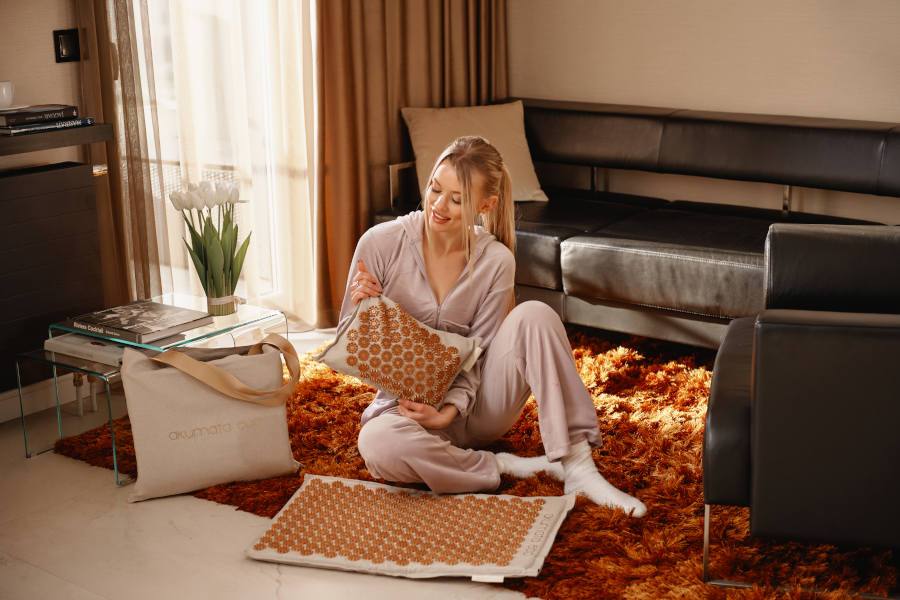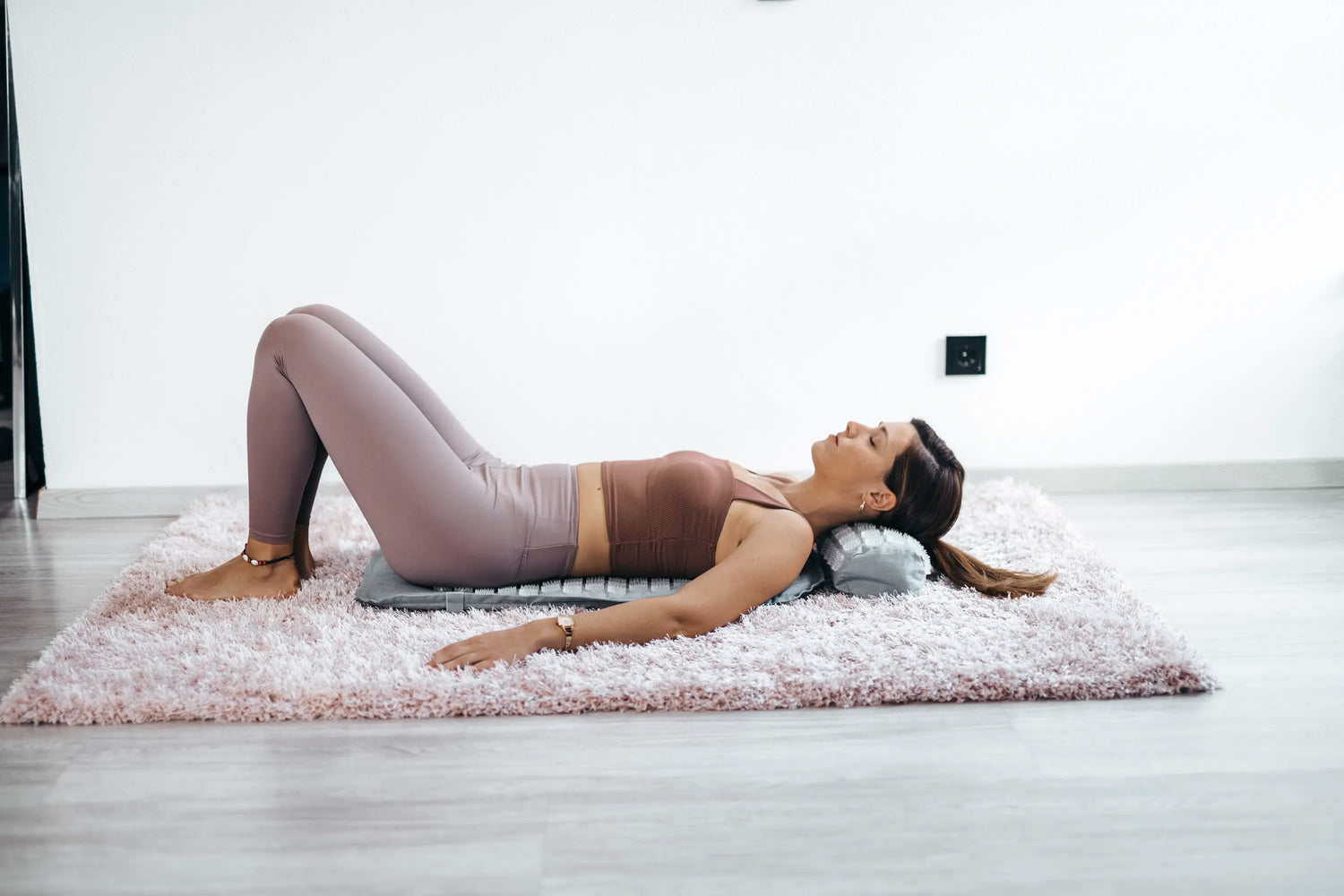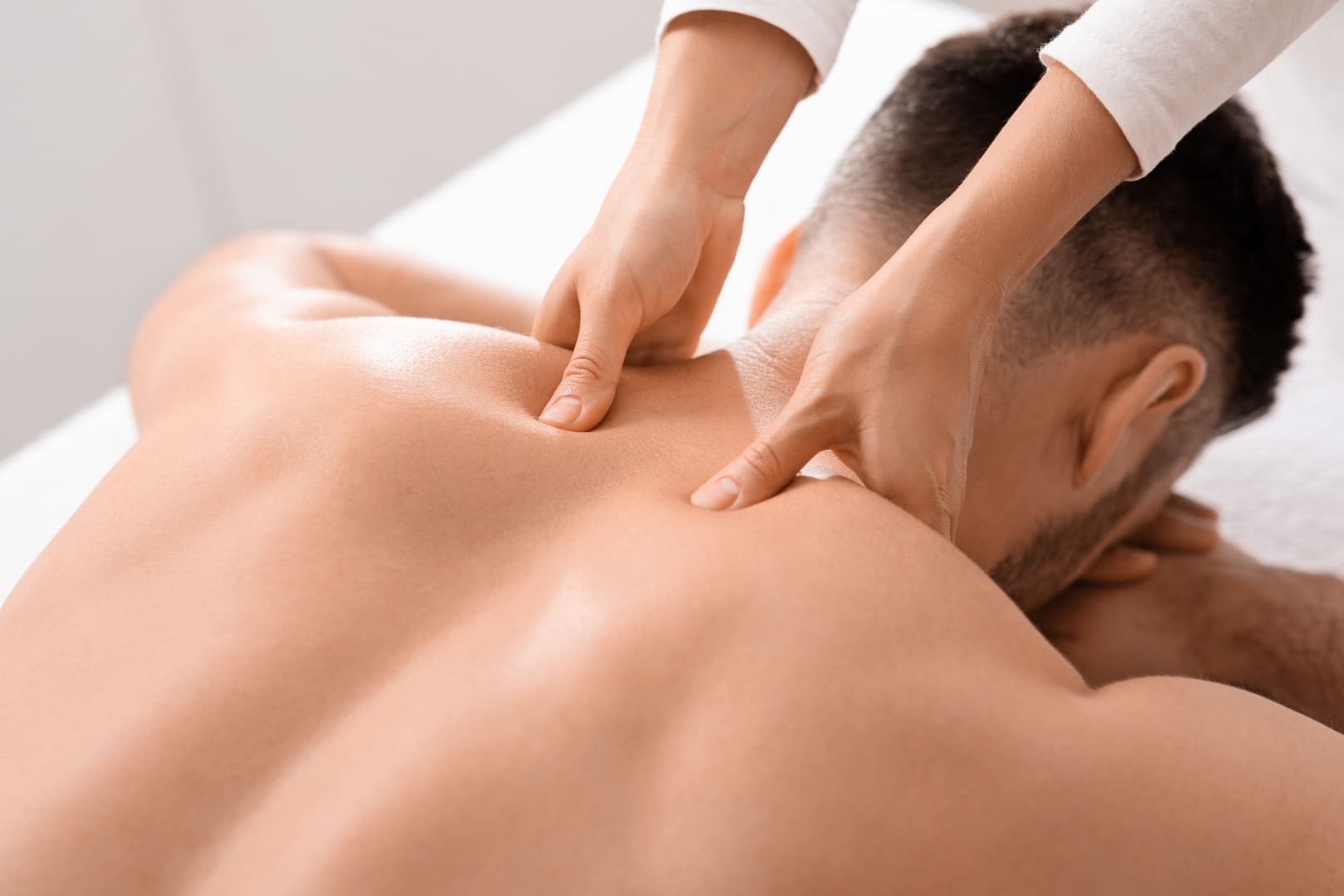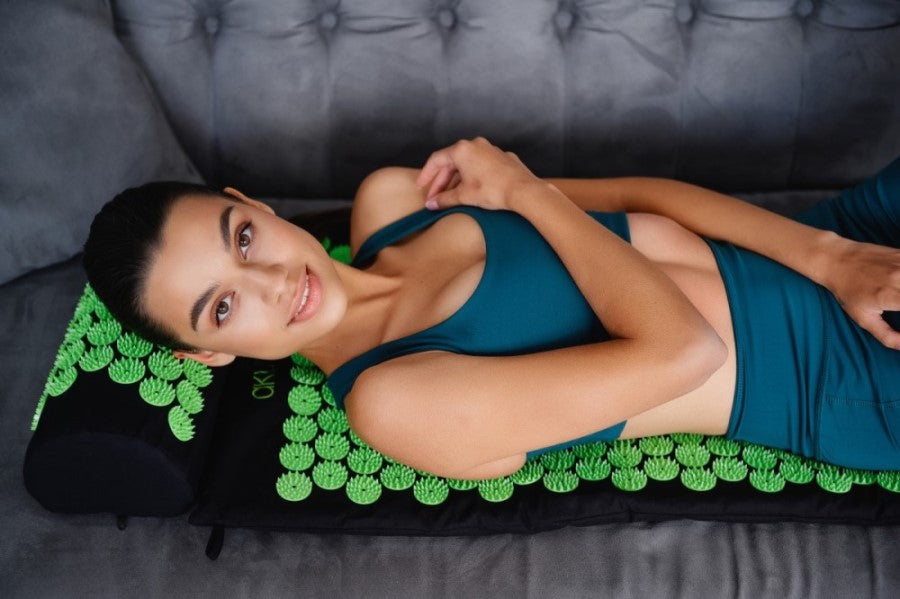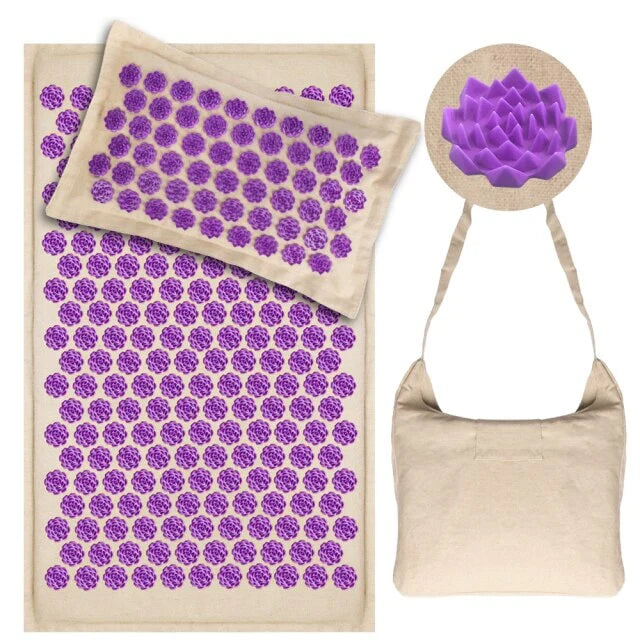Acupressure as a holistic therapy
Acupressure is a form of alternative treatment rooted in Traditional Chinese Medicine (TCM), designed to stimulate energy flow through specific points on the human body known as “acupoints.”
This form of therapy is often seen as a complement to treatments for various symptoms, such as headaches, nausea, and even musculoskeletal pain, supporting those undergoing medical care.
It involves applying targeted pressure often with the thumb, fingertips, or specialized instruments across the meridians of the body, which are believed to connect to organs and influence overall health.
Researchers continue to explore acupressure’s efficacy in enhancing sleep quality, reducing pain, and alleviating symptoms of conditions like cancer, chemotherapy-related nausea, and labor discomfort.
Understanding acupressure: origins and evolution
Definition of acupressure
Acupressure is a non-invasive therapy involving the application of pressure to acupoints on the body, aiming to balance the body’s energy and alleviate symptoms. This technique can help manage discomfort by using meridian stimulation, affecting areas tied to specific conditions such as nausea, vomiting, and insomnia.
Pressure is applied either by hand, thumb, or with an acupressure device to help manage symptoms without needles, making it a viable alternative for those who might avoid acupuncture.
Historical background and cultural variations
Originating in ancient China, acupressure and related therapies, like Shiatsu and Reflexology, have developed across cultures. For instance, auricular acupressure, which focuses on the ear, has shown potential in clinical trials as an alternative therapy for symptom management, especially for cancer patients experiencing side effects like insomnia and vomiting.
Integrative medicine programs now often include acupressure as a complementary therapy in treating patients undergoing cancer treatment. Complementary and alternative medicine practices continue to adapt, offering new acupressure techniques for treating a range of health issues.
The science behind acupressure
How acupressure works?
Acupressure works by stimulating meridians in the human body, where energy, or Qi, is believed to flow. The technique involves applying pressure to acupoints to promote relaxation, relieve pain, and improve sleep quality.
By stimulating specific points, such as those on the hand or ear, acupressure may encourage endorphin release, reduce cortisol, and enhance blood flow. Clinical studies, including randomized controlled trials, have explored acupressure’s effectiveness in managing symptoms like nausea, fatigue, and headaches.
Research findings, available in databases like the Cochrane Database and Evid Based Complement Altern Med, indicate that acupressure is a valuable tool for symptom relief and mental wellness.
Research and evidence-based benefits
Several systematic reviews and studies, including randomized controlled trials, support the efficacy of acupressure in reducing pain, improving sleep, and alleviating chemotherapy-related nausea and vomiting.
For example, a Cochrane review highlighted the potential benefits of acupressure for cancer patients, particularly in reducing nausea without the side effects associated with pharmaceuticals. This evidence-based therapy, often classified under complementary and alternative medicine, helps to improve patients’ quality of life by addressing physical and mental symptoms.
Articles and studies in the United States Patent and Chin Med journals underscore acupressure’s place in modern integrative medicine as a practical, low-risk option for patients.
Types and forms of acupressure
Common acupressure techniques
Acupressure techniques range from manual pressure using the thumb and fingertips to the use of acupressure devices for deeper stimulation. For conditions like musculoskeletal pain and tension headaches, trained therapists often apply sustained pressure to acupoints, whereas acupressure bands or seeds may be used by patients to provide ongoing relief.
In some cases, devices may also be used to apply precise pressure, such as ear acupressure instruments for stimulating points linked to nausea or insomnia. These diverse methods offer flexibility in treating various conditions, either as stand-alone practices or complementary therapies alongside acupuncture or massage therapy.
Forms of acupressure: distinguishing between approaches
Different forms of acupressure focus on unique therapeutic outcomes. For example, auricular acupressure, commonly known as ear acupressure, targets points on the ear to influence symptoms throughout the body.
Reflexology, another approach, focuses on acupoints on the feet to treat organs connected through meridians. Studies suggest that this type of acupressure may reduce blood pressure and improve symptoms related to stress.
With more people exploring complementary therapies, acupressure is gaining recognition as a low-cost, accessible form of symptom management that can complement traditional medical treatments.
Health applications of acupressure
Acupressure for pain management and headaches
Acupressure is frequently used to relieve symptoms of chronic pain, including headaches and tension-related discomfort. Patients with conditions such as migraines often find relief through the He Gu (LI4) acupoint on the hand, which may help to alleviate pressure and reduce pain.
Trained acupressure therapists, often affiliated with wellness centers or clinics, perform acupressure as part of a broader treatment plan, working in tandem with medical providers. Patients report a sense of relaxation and symptom relief from regular acupressure therapy, which contributes to a holistic approach to pain management.
Acupressure for women’s health
Acupressure is also a popular choice for managing women’s health symptoms, including menstrual pain, pregnancy nausea, and labor discomfort. In clinical trials, acupressure has shown efficacy in reducing labor pain when specific acupoints are stimulated.
These techniques provide a non-invasive option to relieve discomfort naturally, enhancing the patient experience during childbirth. Trained therapists may apply pressure to points such as SP6 to help with symptom relief, making acupressure a valuable addition to childbirth education programs and prenatal care.
Acupressure in digital wellness and mental health
As screen time increases, digital wellness applications of acupressure are emerging to address issues like eye strain and stress. Applying pressure to points around the temples or near the eyes can help users feel relief from digital eye strain.
Wellness apps now offer guided acupressure sessions as part of a larger mental health program, using sensors and prompts to ensure accurate stimulation. This novel application highlights how acupressure can evolve to suit modern health needs, bridging the gap between traditional therapies and contemporary health challenges.
Is acupressure safe? Potential side effects and precautions
Safety and side effects
Acupressure is widely considered safe, though minor side effects like soreness or fatigue may occur. For patients with specific conditions, such as those undergoing chemotherapy or managing cancer symptoms, it’s essential to consult a medical provider before trying acupressure, as certain points may need to be avoided.
Studies in journals like Complement Ther Med have emphasized that acupressure can be a safe, accessible therapy with minimal risks. Acupressure devices are also available for self-care, but it’s recommended that patients contact a trained therapist or provider for initial guidance on safe usage.
Who should avoid acupressure?
While acupressure is beneficial for many, certain individuals, such as those with bleeding disorders or those at risk of thrombosis, should approach it cautiously. Additionally, pregnant women should avoid stimulating specific acupoints linked to labor, as it may inadvertently induce contractions.
Children, elderly patients, and those with underlying health conditions should also consult healthcare providers for advice on safe application. In general, acupressure is best suited as a complementary option rather than a replacement for conventional treatments.
Tips for getting started with acupressure
How to prepare for an acupressure session?
Before a session, it’s helpful to prepare by staying hydrated, wearing comfortable clothing, and creating a calm environment. For individuals undergoing treatment for chronic conditions, acupressure can help enhance relaxation and improve overall quality of life.
Many patients report feeling immediate relaxation after a session, as the therapy encourages a focused, mindful approach to wellness. Those new to acupressure might start with gentle techniques and gradually increase pressure as they become more comfortable, learning from each session.
What to expect in a professional session?
In a professional acupressure session, therapists may ask about symptoms, past medical history, and current conditions to tailor the session. Trained acupressure providers assess each patient individually, selecting acupoints that align with the person’s health goals.
A full session typically lasts 30-60 minutes and may address multiple symptoms such as sleep issues, nausea, or musculoskeletal pain. Some centers provide an integrative experience, combining acupressure with massage therapy or other complementary services to maximize symptom relief.
Frequently asked questions
1. What is acupressure, and how does it work?
Acupressure is an alternative therapy rooted in Traditional Chinese Medicine (TCM) that involves pressing specific points, or acupoints, on the skin to stimulate energy flow and promote healing. This therapy operates on meridians, channels through which life energy, called Qi, flows.
Practitioners apply pressure using fingers or specialized instruments to target specific acupoints, which can help to relieve pain, reduce anxiety, and enhance relaxation. Researchers continue to study the effects of acupressure, with trials showing that it can benefit patients by reducing symptoms like nausea, headaches, and stress.
Unlike acupuncture needles, which penetrate the skin, acupressure is non-invasive, making it accessible for those seeking alternative treatment methods.
2. What are the main benefits of acupressure?
Acupressure provides various health benefits, including symptom relief for anxiety, headaches, and chronic pain. By pressing specific acupoints, this therapy stimulates circulation, eases muscle tension, and promotes relaxation.
Research indicates that acupressure can be particularly beneficial for patients with conditions like breast cancer, where it may reduce nausea and anxiety associated with chemotherapy.
The effectiveness of acupressure as a complementary service for managing conditions is supported by studies, with researchers noting that it helps improve quality of life. Additionally, acupressure is safe for most people, including children, as it is non-invasive and targets only the skin’s surface.
3. What are the different forms of acupressure?
There are various forms of acupressure, each targeting specific concerns and conditions. Common types include Chinese acupuncture-inspired techniques, Shiatsu, which uses deep, sustained pressure; Reflexology, which focuses on the feet; and Auricular acupressure, which applies pressure to points on the ear.
Each form is designed to stimulate different acupoints, helping patients feel relief from issues like anxiety and pain. Practitioners, trained in various methods, determine which form of acupressure best suits a person’s unique needs. While some forms can be done at home, complex concerns may benefit from professional service, where practitioners use targeted acupoint techniques.
4. How is acupressure different from acupuncture?
While both acupuncture and acupressure share a focus on stimulating acupoints and meridians to treat health concerns, they differ in application. Acupuncture involves inserting needles into specific points on the skin, while acupressure uses fingers to apply pressure without breaking the skin.
Both methods can help treat conditions like anxiety, headaches, and muscle pain, but acupressure is non-invasive, making it ideal for those hesitant about needles. Acupuncture or acupressure can be beneficial, but acupressure’s non-invasive nature allows patients to self-administer at home or seek help from a trained practitioner, expanding its accessibility.
5. Is acupressure safe for everyone?
Acupressure is generally safe for most individuals when performed correctly, but there are some considerations. People with certain health conditions, like bleeding disorders or skin sensitivities, should consult a healthcare provider before starting acupressure.
While acupressure is safe for children, it’s essential to have a trained practitioner perform it to avoid pressing too hard. For those with specific concerns, like breast cancer patients, acupressure may help manage symptoms of treatment; however, it’s crucial to follow guidance from a medical professional. Overall, acupressure is an effective, non-invasive option to complement traditional therapies safely.
6. Can acupressure help with cancer treatment symptoms?
Yes, acupressure is often used as a complementary therapy for managing symptoms related to cancer treatment, particularly in breast cancer patients. Research shows that acupressure can relieve symptoms like nausea, anxiety, and fatigue, improving overall quality of life.
Many patients feel symptom relief by targeting specific acupoints with gentle pressure, reducing treatment side effects. A recent study in the Cochrane Database highlighted the effectiveness of acupressure for patients experiencing chemotherapy-related nausea.
Acupressure, combined with conventional therapies, offers a supportive approach to cancer care, enhancing well-being and helping patients manage treatment-related symptoms.
7. How long does it take to see results from acupressure?
Results from acupressure vary based on the individual and condition. Some people feel immediate relief from symptoms like anxiety and headaches, while others may require regular sessions over days or weeks to notice improvement.
Studies suggest that consistent acupressure can help reduce symptoms over time, particularly in managing chronic conditions. For example, patients undergoing cancer treatment may experience gradual relief from nausea and anxiety with continuous acupressure.
Overall, the effectiveness of acupressure depends on the frequency and duration of sessions, with many patients finding greater benefits from regular practice.
8. Can I do acupressure at home, or should I see a practitioner?
Many forms of acupressure can be practiced at home for issues like anxiety, tension, or headaches. By pressing specific points on the body, you can stimulate relaxation and symptom relief. However, for more complex conditions or tailored treatment, consulting a trained practitioner is beneficial.
Practitioners understand which acupoints to target based on the person’s symptoms, ensuring a safer and more effective experience. Home acupressure can complement regular sessions with a therapist and allows individuals to manage minor symptoms conveniently.
9. How does acupressure relieve headaches and pain?
Acupressure alleviates pain by targeting acupoints that connect to the body’s natural pain relief pathways. When a practitioner presses specific points, such as the He Gu (LI4) on the hand, it stimulates circulation, reduces muscle tension, and releases endorphins.
These physiological responses help relieve symptoms of headaches, neck pain, and anxiety. Studies indicate that acupressure helps treat chronic pain by enhancing blood flow and reducing inflammation. The technique is accessible and non-invasive, making it an excellent option for those seeking natural pain relief.
10. What should I expect in a professional acupressure session?
In a professional acupressure session, a trained practitioner will first discuss your health concerns, condition, and goals. They’ll determine which acupoints to target based on your needs, such as anxiety, headaches, or pain management.
You may feel immediate relaxation as the practitioner applies pressure using their fingers to stimulate specific areas. Sessions generally last 30-60 minutes, with most patients reporting feelings of relief and relaxation.
Acupressure is especially effective for managing stress and physical tension, offering a comprehensive, non-invasive therapy to complement traditional medical treatments.
